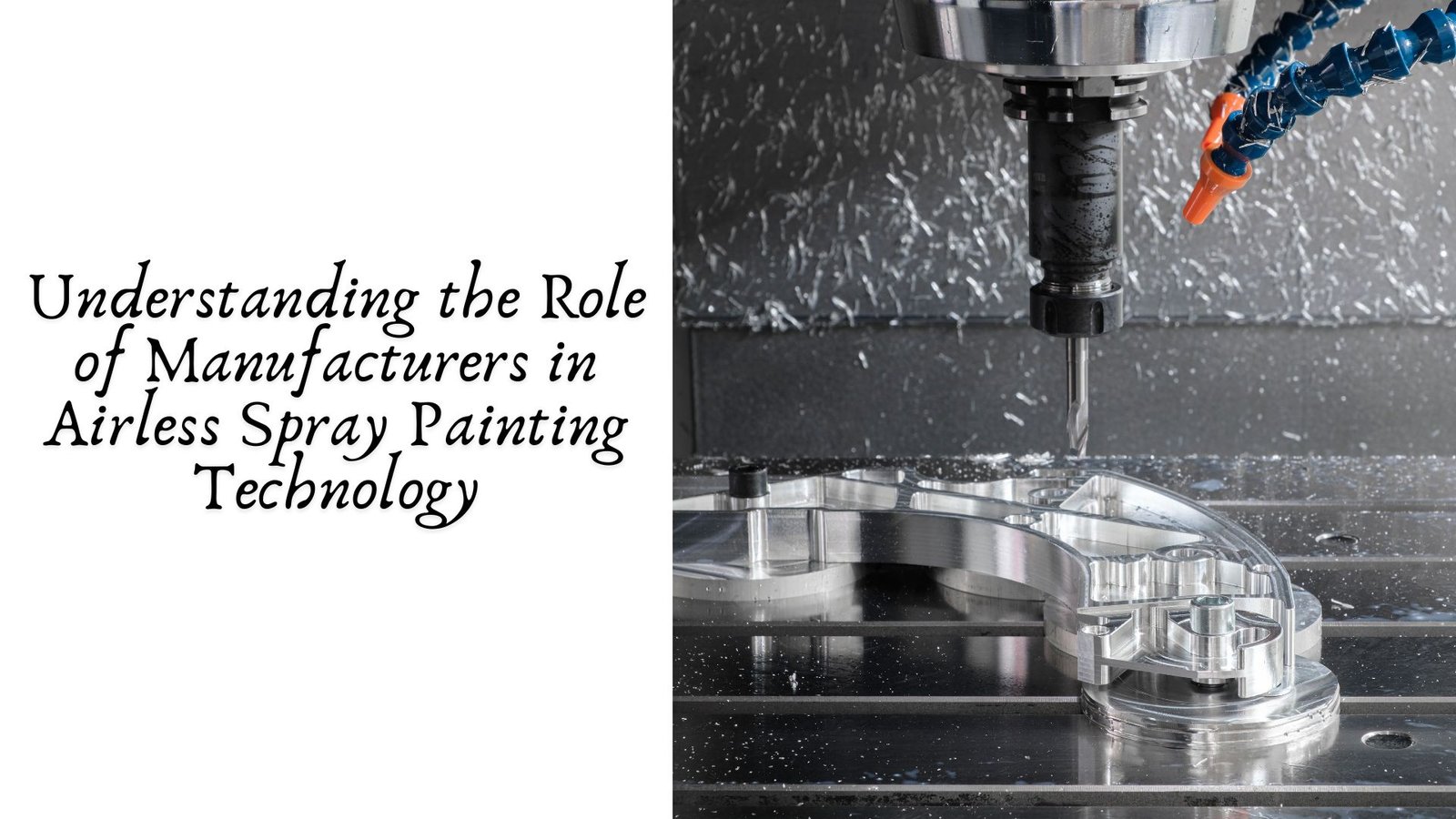Airless spray painting machine technology has revolutionized the painting industry by providing a faster, more efficient, and smoother finish compared to traditional painting methods. This technology uses high-pressure pumps to atomize paint into a fine mist, which is then sprayed onto surfaces without the need for compressed air. As with any advanced technology, manufacturers play a crucial role in its development, quality, and overall performance. This article explores the vital role of manufacturers in the world of airless spray painting technology, highlighting their influence on innovation, product quality, and customer satisfaction.
The Evolution of Airless Spray Painting Technology
The history of airless spray painting dates back to the early 20th century when it was first introduced as a faster alternative to brush and roller painting. Over the decades, manufacturers have been at the forefront of technological advancements, continuously refining the design and functionality of airless spray equipment. They have invested heavily in research and development to create more efficient pumps, durable nozzles, and user-friendly systems that cater to various industrial and residential painting needs. Today, modern airless spray painting equipment is highly versatile, capable of handling a wide range of coatings from thin stains to thick elastomerics.
Innovation and Technological Advancements
Manufacturers are the driving force behind the innovation in airless spray painting technology. They constantly strive to improve the performance and efficiency of their products. Key areas of innovation include:
- Pump Technology: The pump is the heart of any airless spray system, and manufacturers have developed advanced high-pressure pumps that are more reliable and capable of delivering consistent flow rates. Innovations in hydraulic and pneumatic pumps have also allowed for greater versatility in applications.
- Nozzle Design: The design of the spray nozzle directly affects the spray pattern and finish quality. Manufacturers have introduced precision-engineered nozzles that can be easily adjusted to change the width and angle of the spray, allowing painters to achieve the desired finish with minimal overspray.
- Durability and Maintenance: Airless spray equipment is exposed to abrasive materials and requires robust components to ensure longevity. Manufacturers use high-quality materials and coatings to enhance the durability of parts such as hoses, guns, and pumps, reducing the frequency of maintenance and downtime.
- Digital Integration: Modern airless spray systems often come equipped with digital controls and monitoring capabilities. Manufacturers have integrated features such as pressure sensors, flow rate monitors, and digital displays that help users control and adjust the equipment with precision.
- Environmental Considerations: With increasing awareness of environmental impact, manufacturers are developing eco-friendly airless spray systems that minimize wastage and reduce volatile organic compound (VOC) emissions. They also focus on making equipment that is energy efficient and compliant with environmental regulations.
Ensuring Product Quality and Safety
Manufacturers are responsible for ensuring that their airless spray painting equipment meets high standards of quality and safety. This involves rigorous testing of products during the development phase to identify and rectify potential issues before they reach the market. Safety features, such as automatic shut-offs and pressure relief valves, are also incorporated into the design to protect users from accidents.
To maintain quality, manufacturers adhere to strict manufacturing processes and quality control measures. They often obtain certifications from recognized industry bodies, which serve as a testament to their commitment to product excellence. By providing reliable and safe equipment, manufacturers build trust with their customers, fostering long-term relationships.
Training and Support Services
A significant role of manufacturers extends beyond just producing equipment; they also provide training and support to their customers. Understanding that proper usage and maintenance are key to maximizing the performance and lifespan of airless spray equipment, manufacturers offer comprehensive training programs. These programs educate users on how to operate the equipment correctly, select the appropriate nozzles, adjust pressure settings, and perform routine maintenance.
Additionally, manufacturers provide technical support through customer service teams and online resources, such as manuals, video tutorials, and troubleshooting guides. By offering robust support services, manufacturers ensure that users can resolve issues promptly, minimizing downtime and enhancing the overall customer experience.
Customization and Adaptability
One of the key roles of manufacturers in the airless spray painting industry is the ability to offer customized solutions. Different industries and applications have unique requirements, and manufacturers often provide tailored equipment to meet these specific needs. Whether it’s designing pumps with higher pressure capacities for industrial use or creating compact, lightweight models for residential projects, manufacturers cater to a broad spectrum of demands.
This adaptability is particularly important in specialized fields, such as automotive, aerospace, and marine painting, where precision and performance are paramount. By working closely with industry professionals, manufacturers can develop products that are precisely aligned with the needs of their clients, further enhancing the value of airless spray technology.
Market Trends and Future Directions
As technology continues to evolve, manufacturers will play an increasingly vital role in shaping the future of airless spray painting. Emerging trends such as automation and smart technology integration are set to transform the industry, making spray painting more efficient and user-friendly than ever before. Manufacturers are already exploring the use of artificial intelligence and robotics to automate the painting process, reducing labor costs and increasing precision.
Moreover, with the growing emphasis on sustainability, manufacturers are likely to focus on developing greener airless spray solutions. This includes designing equipment that uses less energy, produces minimal waste, and operates with environmentally friendly coatings.
Conclusion
Manufacturers are the backbone of airless spray painting technology, driving innovation, ensuring quality, and providing essential support services. Their commitment to research and development, along with their ability to adapt to market needs, has made airless spray technology a staple in the painting industry. As the demand for faster, more efficient, and environmentally conscious painting solutions continues to grow, manufacturers will remain at the forefront, shaping the future of airless spray painting technology.
Name: Process Control & Systems
Phone: +919051202216
Address: Modi House, Ground Floor, 14, Raja Naba Krishna Street, Kolkata – 700005, WB, India




